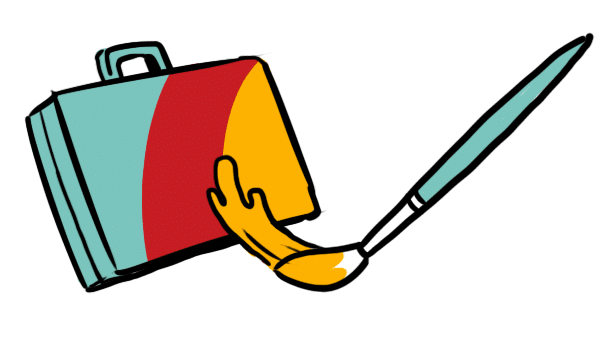Peruse the top ten requisite business skills right now and forecasted for the future (as determined by last year’s World Economic Forum Future of Jobs report) and you’ll find a common thread of creativity. Skills like manual dexterity and time management are trending downward. Emotional intelligence, originality, critical thinking, innovation, and complex problem solving are gaining ground.
Creative problem solving is a highly sought after skill, and recruiters consider it as valuable as it is rare.
Machine learning, AI, and technological advances have become solid replacements for many of the manual and mundane tasks that made up work as we’ve known it for decades. One natural resource emerges that can give businesses a distinct advantage: creativity.
Not only does creativity fuel innovation, but it can also actually foster success by more traditional methods. When it comes to companies constantly rated as highly creative, 67% boast an above-average organic revenue growth. And 70% have an above-average rate of return to shareholders.
Whether you’re immersed in a creative industry or striving to infuse creativity into a workplace that could use a boost in morale and revenue, consider these tactics to align your strategy with the future of work.
1. Play to your team’s strengths
From the accountant with breathtaking Excel sheets that showcase numbers in ways you’ve never imagined to the engineer whose blueprints defy convention, you’re probably already surrounded by creatives. Albeit perhaps not in the traditionally defined sense.
Allow your team to embrace innovation where they feel most comfortable. You’ll be able to leverage their creative ideas in ways that make logical sense and maximize productivity. Tom Kelley, General Manager at design firm IDEO, developed a method of categorizing your team into various aspects of creativity. He called it “The Ten Faces of Innovation.” In it, he identified three personas: Learning, Organizing, and Building.
He outlined the common traits of employees within those personas. Then he looked for ways to plug into existing talents and fill gaps where talent may be needed. Using this methodology or your own can be a great way to celebrate your team while increasing your business success.
2. Be proactively creative
According to Professor Gerard Puccio, using creativity to create change in business can be as simple as rethinking when and how we bring it into the mix.
Creativity is almost always catalyzed by responding to a situation. A problem that needs solving. An opportunity that needs evaluating. By proactively applying creative thinking skills as a necessary business tool, rather than a reaction or last resort, challenges can be addressed more quickly. And opportunities can be transformed more readily into innovative solutions. Being proactively creative means identifying problems and opportunities by rethinking how and when you look at your business.
Instead of casting aside unknowns, dive into the unknown. Study what you don’t know, rather than waiting for information to reveal itself.
3. Bake creativity into your strategy
Adam Brandenberger over at Harvard Business Review has outlined an elegant and alliterative way to ensure your business is rooted in creativity, even at a strategic level.
- Contrast: challenge the conventional wisdom.
- Combination: put siloed products or ideas together to see what happens.
- Constraint: turn what’s holding you back into what’s setting you free.
- Context: put your business challenges in a different scenario to gain perspective.
Of course, the guiding principle here is that frequently a shift in thinking can lead to growth and change.
4. Develop metrics around creativity
Faced with stagnant sales and slumping brand recognition, the brand Birds Eye embraced a creative business strategy by first introducing an 80/20 culture. Eighty percent of their efforts are aligned with a business plan, while 20% are pure “moonshots.”
The brand also developed its own metrics for gauging creative success—using neuroscientific principles to measure emotional response. After just one year, they saw their average ROI increase by 24%. They went from declining at a rate of 5%-6% per year to growing by 4% the year after implementing the changes.
5. Give time to innovate and time to recharge
Companies have seen great success by paying employees for innovation spurred by their own creativity. Most famously, Google’s 20% program, in which Google employees are encouraged to spend 20% of their time pursuing a project related to their own interests. However, it’s also crucial to reward creative thought by recognizing that it sometimes takes exponential effort and experimentation.
To avoid burnout try these tips:
- Encourage your team to take breaks,
- Explore how to best maximize the brain’s modes of thinking, and
- Keep their creative batteries charged with ruminative activities like doodling or meditation.
Some creative companies offer Friday afternoons off, or time off in exchange for hours of overtime in brainstorm or ideation sessions.
It’s important to note that just as weightlifting requires different recovery methods than marathon running, exercising creative muscles will only be productive if given time to refocus, rebuild, and renew.

